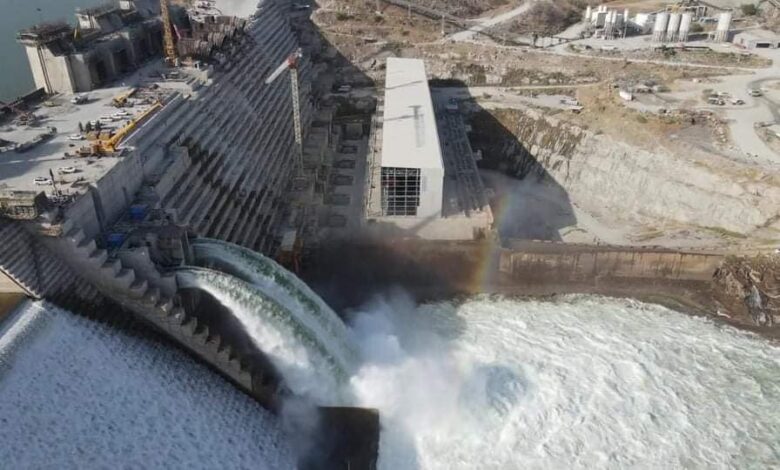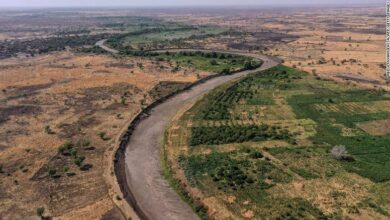
The Professor of Geology and Water Resources at Cairo University Abbas Sharaky revealed on Tuesday that all turbines at the Grand Ethiopian Renaissance Dam (GERD) stopped operating until at least October 20, prompting Ethiopia to open the dam’s upper spillway gates.
He confirmed that opening one of the GERD’s upper spillway gates with a discharge of nearly 200 million cubic meters per day, is roughly equivalent to the daily rainfall at this time in October, which is conclusive evidence that all turbines have stopped operating.
Sharaky explained in a post on his official Facebook account that satellite images analyzed on October 20 confirm that the turbines remain completely shut down.
He indicated that the daily rainfall at the GERD will gradually decline, reaching 150 million cubic meters by the end of this month, then 50 million cubic meters by the end of November.
Sharaky added that keeping one of the six upper spillway gates open is sufficient to channel the current daily rainfall flow, while maintaining the lake’s full reservoir if the turbines remain shut down – however, if four turbines operate on average, the spillway gate will be closed.
He confirmed that the High Dam is receiving water flow efficiently as usual, and that storage is proceeding normally.
The Toshka Spillway Canal spillway remained closed until October 19.
The GERD, completed and officially inaugurated this year on the Blue Nile, is one of the Nile’s main sources and the largest hydropower project in Africa.
At a cost of five billion dollars, it aims to generate 5,150 megawatts of electricity for Ethiopia, covering 40 percent of its energy needs.
The dam includes 13 turbines and a 74 billion cubic meter reservoir. Its reservoir has been filled five times by September 2024, reaching a level of 638 meters above sea level.
The dam has sparked sharp disputes with Egypt and Sudan, which depend on the Nile for 97 percent and 55 percent of their water, respectively.
Egypt, which historically receives 55.5 billion cubic meters annually under agreements from 1929 and 1959, fears that the dam will reduce water flow, threatening agriculture (which consumes 80 percent of the water) and the water security of its 100 million people.
Sudan sees the dam’s benefits in irrigation and electricity, but fears uncontrolled flooding, such as in October 2025 when the opening of the sluices flooded areas in the Roseires River, prompting Ethiopia to reduce discharge to 300 million cubic meters per day to avert disaster.




